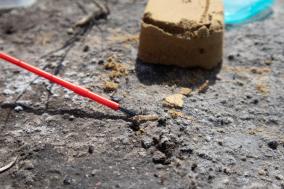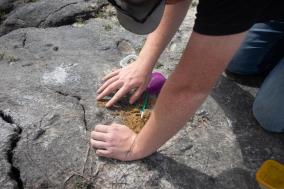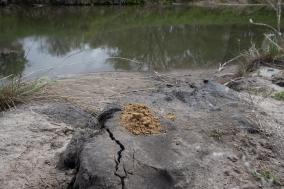LPSNRD Supports Endangered Salt Creek Tiger Beetle Recovery
LPSNRD Supports Endangered Salt Creek Tiger Beetle Recovery



The Lower Platte South Natural Resources District (LPSNRD) recently joined a multi-agency effort to release more than 160 Salt Creek Tiger Beetle larvae into local saline wetlands—part of an ongoing effort to recover one of the world’s rarest insects.
Federally listed as endangered since 2005, the Salt Creek Tiger Beetle exists only in the saline wetlands of southeast Nebraska. These rare habitats, formed by ancient salt deposits from a prehistoric inland sea, provide the salty mudflats the beetles need for feeding, breeding, and survival.
These unique wetlands once spanned an estimated 20,000 acres around what is now Lincoln; today, less than 4,000 acres remain—making them one of the most threatened wetland ecosystems in the country. Since 2003, the Saline Wetland Conservation Partnership—comprised of the City of Lincoln, LPSNRD, Nebraska Game and Parks, and Pheasants Forever—has worked to preserve and restore these vital lands. Together, they have secured over 2,000 acres for long-term conservation. Their work has made efforts like the recent beetle release possible.
Saline wetlands, however, support more than just the Salt Creek Tiger Beetle. They are home to rare salt-tolerant plants like spearscale, inland saltgrass, sea blite, and the state-endangered saltwort. These wetlands also help improve water quality and reduce flooding by filtering runoff and storing rainwater.
We extend our sincere thanks to all partners involved: U.S. Fish & Wildlife Service, Nebraska Game and Parks Commission, City of Lincoln, Topeka Zoo, Henry Doorly Zoo, Lincoln Children’s Zoo, University of Nebraska–Lincoln, and our LPSNRD staff.
Want to see these wetlands up close? Visit one of our saline wetland areas for wildlife watching, photography, or to explore Nebraska’s truly one-of-a-kind habitat.


